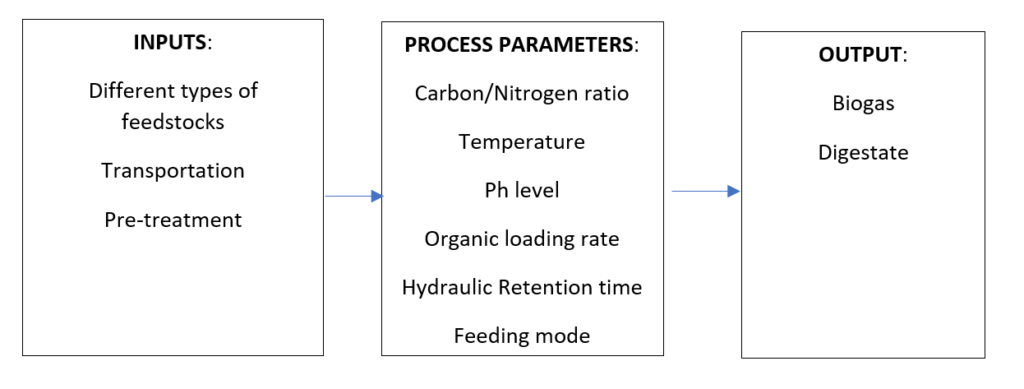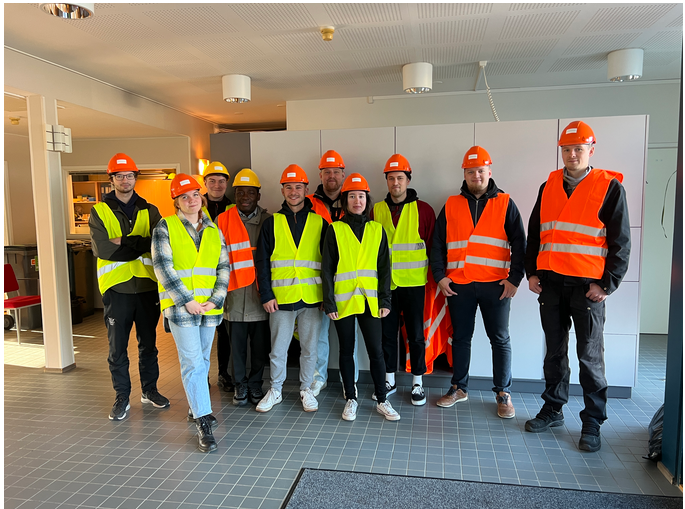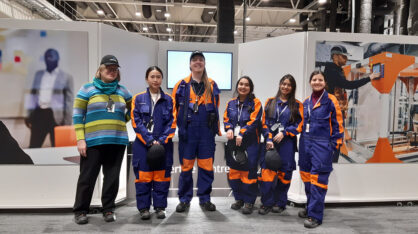Introduction
The role of student-centered and group-based learning are gaining more attention in the University of Applied Sciences with the goal to develop relevant competences to match the career needs of students. The goal of these approaches is to enhance student participation, improve critical thinking, problem solving skills and contribute to peer learning (Santos et al. 2019). Team-based learning is a learner-centred approach in which self-managed student teams are the focal point for learning (Parmelee et al. 2012). Team-based learning TM (TBL) is an active learning and small group instructional strategy that provides students with opportunities to apply conceptual knowledge through a sequence of activities that includes individual work, teamwork and immediate feedback. Student teams are formed for the duration of course and the teams are guided by a single instructor. Team based learning allows students to explore real world problems and apply knowledge to solve problems. TBL is characterised by three key components: individual advance student preparation; individual and team readiness assurance tests (tRATs); and majority of in-class time devoted to decision-based application assignments done in teams.
TBL is highly learner-centered supported by the instructor and uses teacher and peer evaluation, and immediate feedback to ensure individual and team accountability to promote learning activities (Parmelee et al. 2012). Parmelee et al. (2012) suggested that when TBL is applied correctly, academic outcomes are improved in comparison to either lecture-based formats or more traditional small group learning models. In addition, they provided a practical guideline in conducting team-based learning in an educational setting.
In this article, we describe the application of team-based learning approach in an under-graduate level course, Bioenergy offered at the Vaasa University of Applied Sciences. A modified approach of guidelines suggested by Parmelee et al. 2012 is applied to the bioenergy course. The paper is structured as follows: The next section presents the principles of team-based learning followed by the description of the course, and a description of how TBL was used for the course. The final section presents the conclusion.
Principles of Team-Based Learning
Based on the literature review, there are 8 principles of team-based learning that can help educators integrate TBL into their courses. These principles are collaborative environment, mentoring and coaching, organizational tools and structures, communication, regular feedback, teamwork, learning contracts, and assessments. While some might argue that understanding the specific principles of team-based learning is not necessary, the truth is that understanding and applying these principles will help lecturers and students maximize the benefits of the framework. After all, TBL is not just something that is applied within the classroom, it is something that can be applied within your students’ lives outside the classroom.
Collaborative Environment: Instead of having students compete against each other (even if it is friendly competition) for grades or have some students critical of others’ work while others are critical of their own work, an environment of collaboration encourages a supportive, growth-focused environment. In a collaborative environment, students support each other in their growth as learners, and they become more interested in the subject because they see its usefulness in their lives.
Mentoring and Coaching: Through the implementation of mentoring and coaching, students are given the skills and confidence to apply their knowledge outside the classroom and into the world. The teacher might assign students to create a digital resource for other students who are studying the same topic.
Organizational Tools and Structures: TBL uses organizational tools that are appropriate for team-based work. This includes things like creating a team charter, using a communication tool, for example, a shared drive the using a project management tool to help the students stay on track and track their progress.
Communication: TBL relies on tools for communication, such as personas and check-ins, to keep communication flowing between students, teachers and other stakeholders.
Regular Feedback: By providing regular feedback to the students as they work on their team-based assignments, the teacher can help them improve their skills and gain confidence in their work.
Teamwork: The heart of team-based learning is teamwork, and teachers/instructors can apply this principle to the creation of the content their student’s study. Students can create their own team-based projects around projects, such as a project chosen by the students, a concept or project chosen by the instructor, or a combination of the two.
Learning contracts: Every team should create a contract that details what they hope to learn from the project, what they need to do to learn what they hope to learn, and how they will reflect on their work. Teachers/instructors can have their students create contracts around projects or topics selected for the course.
Team based learning in Bioenergy course
The bioenergy course is developed around input, processes and technologies, and output with focus on anaerobic digestion (see Figure 1) As described by Vögeli et al. 2014, the anaerobic digestion (biowaste) can be divided into three key stages:
Input: Waste generation, collection, transportation and supply to the digestion facility, and necessary pre-treatment of waste before feeding the digester.
Transformation process: Biological and chemical transformation processes of feedstock in the digester which leads to value products.
Product chain: post-treatment of outflows from the digester that refine these into improved value products, and their distribution and utilisation.

To imitate the real word development of bioenergy, students are asked to design and plan the development of a biogas and incineration plant project using framework provided above. The bioenergy course, 12 weeks in duration, is divided into 3 key areas of the process chain of anaerobic digestion (AD) shown in Figure 1. The student teams are formed with the objective of creating a multicultural team since the class is made of Finnish students and exchange students from France, Germany, and South Korea. During the course, each team works on their selected project. For the duration of the course the student teams work face -to -face in classroom settings to address the learning outcome. At each stage the students share their findings with the entire class in the form of presentation. After the first stage and second stage, a visit is made to a bioenergy plant for real life observation of how a biogas plant works and developed. Figure 2 presents a visit of the team to Stormossen, a biogas plant situated in Vaasa. The course structure is presented in Table 1. After discussing the different pathways of bioenergy conversion, 3 teams select the design of biogas plant and one team selected an incineration plant. A student in the incineration team worked as a summer trainee in an incinerator plant.

At the end of the bioenergy course, students made a final presentation and final exam written on the three key areas of the process chain of AD and incineration plant. The course evaluation consist of team presentation and reports is 30%, individual reports and quiz is 20p, exam 30%, and class and project participation 20%.
| Week | Course Module | Student Activity | Lecturer´s Activity |
|---|---|---|---|
| 1 | Introduction to bioenergy and bioenergy conversion pathways | Teamwork. | Introduction to the course, and bioenergy conversion pathways. Formation of teams. Presentation of task and guiding teams |
| 2 | Properties of biomass and feedstock selection. | Preparation of individual report and teamwork. | Lecture to introduce biomass properties. Team selection of path and guiding teamwork* |
| 3 | Process parameters of anaerobic digestion and incineration plants | Preparation of individual report and teamwork. | Lecture to introduce process design parameters of biogas and incineration plant. Guiding teamwork |
| 4 | Design and planning of biogas and incineration plant | Preparation of teamwork report. Mid presentation to the class | Guiding teamwork |
| 5 | Environmental and social impacts of bioenergy | Preparation of teamwork report | Lecture to introduce environmental and social impact. Guiding teamwork |
| 6 | Visit to Biogas plant | Team visits to a biogas plant for practical application of knowledge | Guiding teamwork |
| 7 | Biogas yield and energy output from Incinerations calculations | Preparation of report and teamwork | Introduction to biogas yield and sizing of biogas plant |
| 8 | Exams | Write final exam for the course. | Exam supervision |
| 9 | Evaluating biogas reactor an incinerator and operation conditions | Teamwork and preparation | Introduction to bioenergy and incineration calculations software tools. Guiding team |
| 10 | Financial feasibility of biogas and incineration plant and preparation of final presentation | Teamwork and preparation | Guiding team |
| 11 | Evaluating checklist for developing biogas and incineration plant | Teamwork and preparation | Guiding team |
| 12 | Final presentation | Final presentation | Evaluation of presentation by students and instructor |
Conclusion
Team-based learning has been proven to be a great strategy for teachers to implement in their classrooms because it promotes collaboration among students, empowers students as learners, and encourages higher-order thinking skills. Teachers can use TBL principles to create project-based learning environments that promote problem-based and critical thinking skills among their students. The practical guide provided by Parmelee et al. 2012 can be modified to suit different courses in VAMK.




